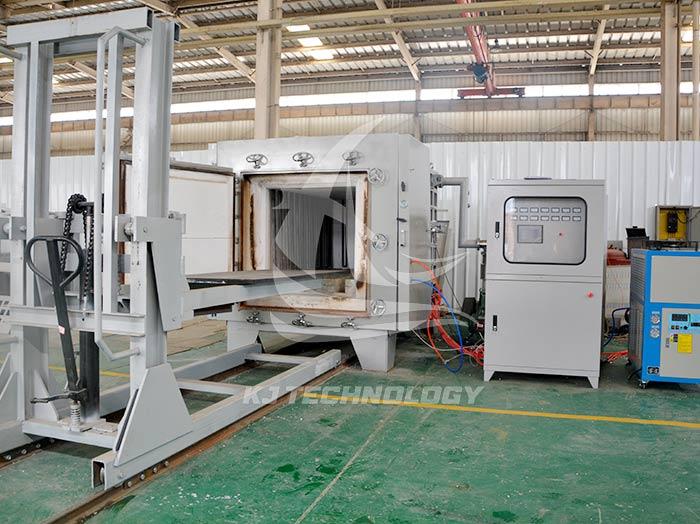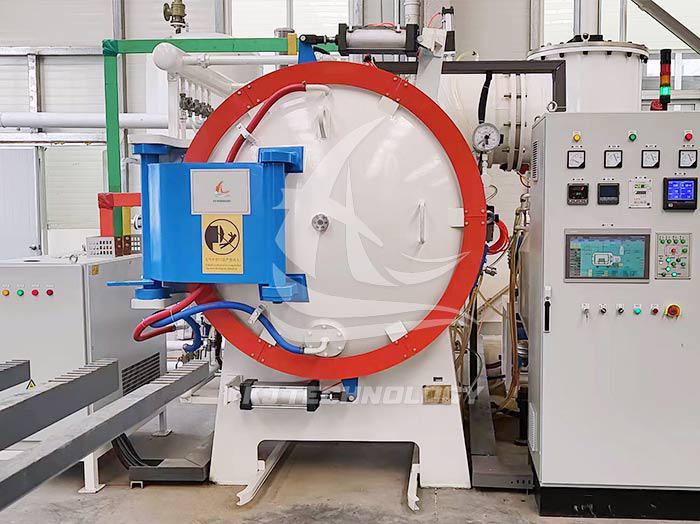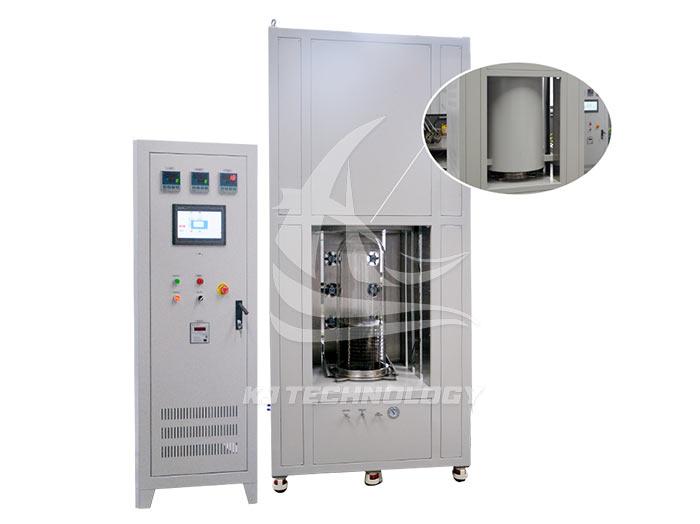What are the applications of vertical high vacuum hot pressing electric furnaces?
 08-20-2025 Author: KJ technology
08-20-2025 Author: KJ technology
The vertical high vacuum hot pressing electric furnace, with its synergistic effect of vacuum environment, high-temperature heating, and mechanical pressurization, has demonstrated irreplaceable application value in multiple high-tech fields. The specific application areas and advantages are as follows:
1. Powder metallurgy field: core equipment for high-performance material preparation
High precision ceramic bearings and substrates
Application case: The density of silicon nitride ceramic bearings can reach 99.8%, and the fatigue life is increased by 40% compared to traditional processes; The thermal conductivity of silicon nitride ceramic substrate reaches 25W/(m · K), meeting the heat dissipation requirements of 5G communication modules.
Advantages: Vacuum environment eliminates gas inclusions, pressure promotes particle rearrangement, significantly reduces porosity, and improves material wear resistance and reliability.
Metal matrix composite
Application case: Aluminum based silicon carbide heat sink achieves uniform distribution of silicon carbide particles through hot pressing process, increasing thermal conductivity to 180W/(m · K) while maintaining lightweight (density<3.2g/cm ³).
Advantages: The combination of pressure strengthening interface solves the problem of mismatched thermal expansion coefficients between metals and ceramics, and improves the comprehensive performance of materials.
2. Key Technologies for Transparency and High Performance in the Field of Functional Ceramics
Transparent ceramics
Application case: Transparent alumina ceramics with a transmittance of over 85%, used for laser windows, infrared detectors, etc; Magnesium aluminum spinel transparent ceramics have better impact resistance than traditional glass and are used in bulletproof windows.
Advantages: Vacuum hot pressing eliminates grain boundary pores, reduces light scattering, and achieves high transmittance and strength.
industrial ceramics
Application case: The silicon carbide ceramic nozzle achieves a density of 99.2% through hot pressing process, improves wear resistance by 50%, and extends its service life to three times that of traditional nozzles.
Advantages: Pressure promotes sintering densification, reduces sintering temperature (200-300 ℃ lower than normal pressure sintering), reduces abnormal grain growth, and improves material toughness.
3. New energy field: performance breakthroughs in battery and photovoltaic technology
Sintering of lithium battery electrodes
Application case: The hot pressing process reduces the internal resistance of the polarizer by 15%, exceeds the cycle life of 2000 times, and increases the energy density by 10%.
Advantages: Pressure promotes the bonding between electrode materials and current collector interfaces, reduces contact resistance, and improves battery charging and discharging efficiency.
Annealing of photovoltaic silicon wafers
Application case: Vacuum annealing reduces surface defects on silicon wafers, improves photovoltaic conversion efficiency by 0.5% -1%, and achieves a minority carrier lifetime of over 10ms for single crystal silicon wafers.
Advantages: Vacuum environment prevents silicon wafer oxidation, pressure eliminates thermal stress, and reduces lattice defects.
4. Semiconductor and Microelectronics: Essential Tools for High Precision Manufacturing
Chip substrate soldering
Application case: The brazing of chips and ceramic substrates is completed in a vacuum environment of 10 ⁻ Pa, with a solder joint void rate of<1% and reliability meeting military standards.
Advantages: Vacuum environment eliminates solder oxidation, pressure promotes solder flow, and achieves defect free welding.
Sintering of microelectronic materials
Application case: Multi layer ceramic capacitors (MLCC) achieve dense interlayer bonding through hot pressing technology, increasing capacity by 20% and reducing equivalent series resistance (ESR) by 30%.
Advantages: Pressure prevents interlayer delamination, improves material dielectric properties and frequency response characteristics.
5. Aerospace and Automotive Fields: Dual Requirements for Lightweight and High Performance
Manufacturing of titanium alloy components
Application case: Titanium alloy blades for aircraft engines are processed by hot pressing to achieve a density of 99.8%, improve fatigue resistance by 40%, and reduce weight by 15%.
Advantages: Vacuum environment prevents high-temperature oxidation of titanium alloy, pressure eliminates casting defects, and improves material mechanical properties.
Lightweight materials for automobiles
Application case: Magnesium alloy wheels achieve grain refinement through hot pressing process, with a tensile strength of 350MPa, reducing weight by 30% while meeting safety standards.
Advantages: Pressure promotes dynamic recrystallization, optimizes material structure, and enhances strength and plasticity.
6. Research and University Fields: Basic Platform for New Material Development
Nanomaterial synthesis
Application case: Carbon nanotube/metal based composite materials achieve uniform dispersion of nanotubes through hot pressing process, with a 50% increase in strength and a 20% increase in conductivity.
Advantages: Vacuum environment prevents oxidation of nanomaterials, pressure promotes interface bonding, and achieves functional design.
High temperature superconducting materials
Application case: YBCO superconducting tape achieves consistent grain orientation through hot pressing process, with a critical current density of 10 ⁴ A/cm ² (77K).
Advantages: Pressure promotes texture formation and enhances the stability of superconducting properties.








